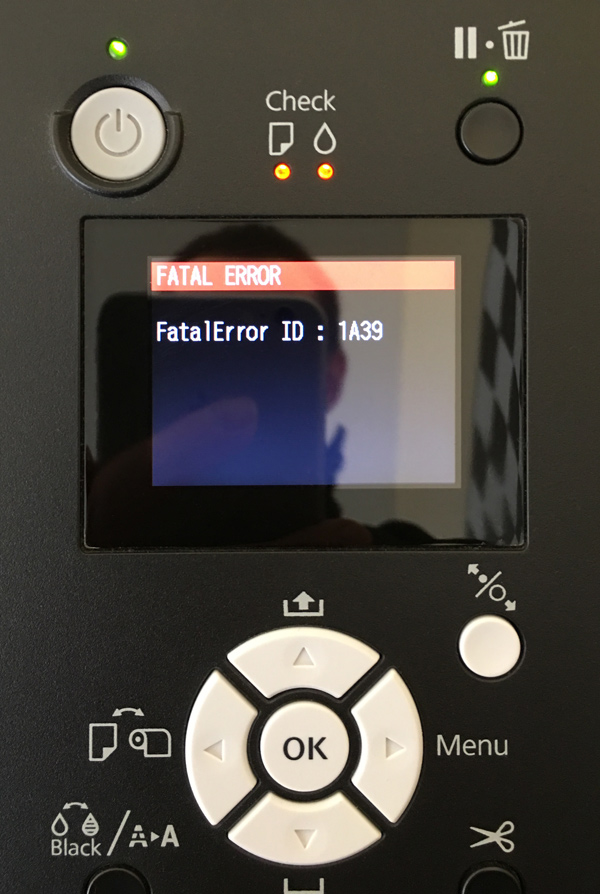 When I turned on my Epson Stylus Pro 4900 a few days ago to do the regular maintenance cycle, the dreaded fatal error 1A39 appeared on the LCD. Kudos to Epson for these descriptive error messages. Not.
When I turned on my Epson Stylus Pro 4900 a few days ago to do the regular maintenance cycle, the dreaded fatal error 1A39 appeared on the LCD. Kudos to Epson for these descriptive error messages. Not.
A quick search on the net as well as phoning the service and I had a complete diagnosis: the print head went dead. Replacement (including the pump unit) would cost about 80% of a new printer. Oops.
This is the fourth occurrence of such a problem in my circles. The urban legend says that when left turned off for a while, ink dries up from the head and since it is also used for cooling, being inkless repeatedly (no cooling at startup) will fry something in the head assembly. This seems to affect Epson’s current TFP heads (used in the 4900/7900/9900 – those models me and my acquaintances had issues with). The legend also tells that in newer heads (the ones that you get if you go the replacement route or buy a x900 printer these days) had been redesigned and free of this problem.
This theory is somewhat supported by the fact that most of the printers having this problem were used sporadically. I had no issues with the 4900 during the 3 years I used it heavily, but during the last one and a half years it had been sitting mostly idle, only doing a small print every two to four weeks.
In other words, it’s been starved to death.
Since my printer already made much more profit than it’s cost, I’m just mildly irritated. But saying that it’s not irritating to run into a design flaw (in case the legend holds true) that costs me money would be a lie.
Anyway, I’ll need a new printer. My use in the future will continue to be light, so I’m not going the TFP route again. Yes, the legend says that this problem had been fixed in the new heads, but Epson also publicly stated several times that new printers are not susceptible to clogging – which was far from truth with the 4900. So no TFP, thank you.
I’m looking into two printers now: the 17″ Epson P800 (which uses the previous generation AMC head), and Canon’s 24″ iPF6450 PRO 2000. The 17″ PRO 1000 had been quickly ruled out by not having a straight paper path, not supporting some heavy media I use, and it’s ridiculous margin handling (I can’t print a 30×45 on an A3+ paper). Epson’s new P7000 was considered for a fleeting moment, but it uses a TFP head, so I stopped thinking about it.
Fortunately I’m not in a hurry to get a printer immediately, so I’ll have time to do some evaluation before making the decision. I’ll start with a first look on the P800 towards the end of next week.
But there’s a gift in every problem: since the only thing I used Windows for was printing, I could finally eliminate the very last (albeit virtual) Windows machine in the company! And man, this is a huge time saver. Based on this, I’ll take the opportunity to reimplement my printing workflow purely on OS X. I badly needed this, but there were always more excuses important things. Now I ran out of them.
Postscript: I’m selling the remaining consumables (inks, cutter blade, maintenance tank) as well as fully operational parts (roll spindle, roll unit, paper tray, or any other parts you may need) from the dead printer. Please let me know if you are interested.
☕ ☕ ☕
Did this post help you? Consider buying me a coffee if so.





